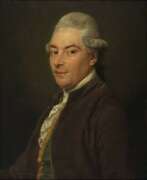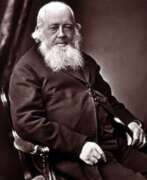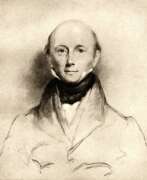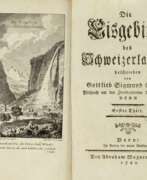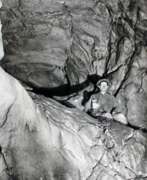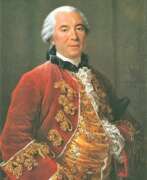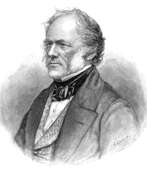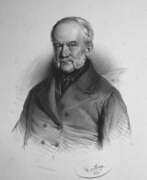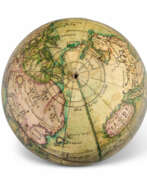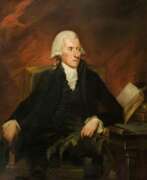Geologists
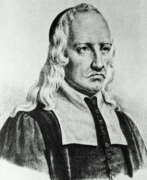

Giovanni Alfonso Borelli was an Italian universalist scientist of the 17th century Scientific Revolution, the founder of biomechanics.
He studied mathematics under Benedetto Castelli (1577-1644) in Rome. In the 1640s Borelli was appointed to the chair of mathematics at the University of Messina and at Pisa in 1656. After 12 years at Pisa and numerous disputes with colleagues, Borelli left the university. In 1667 Borelli returned to the University of Messina, where he engaged in literary and historical studies, studied the eruption of the volcano Etna, and continued to work on the problem of muscular movement of animals and other bodily functions according to the laws of statics and dynamics. In 1674 he was accused of participating in a conspiracy to liberate Sicily from Spain and fled to Rome.
Borelli is known primarily for his attempts to explain muscular movement and other bodily functions according to the laws of statics and dynamics. His best-known work is De Motu Animalium (1680-81; "On the Motion of Animals"). Borelli calculated the forces required for balance in the various joints of the human body, long before Newton published his Laws of Motion. Borelli was the first to realize that musculoskeletal levers increase motion, not force, so muscles must produce much greater forces than those that resist motion. He was also one of the first microscopists: he made microscopic studies of blood circulation, nematodes, textile fibers, and spider eggs. Borelli also authored works on physics, medicine, astronomy, geology, mathematics, and mechanics.
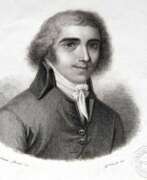

Giovanni Battista Brocchi was an Italian mineralogist, geologist and paleontologist.
Brocchi studied law at the University of Padua, but was seriously interested in natural sciences and mineralogy. In 1802, Brocchi became a teacher of natural history at the Brescia Gymnasium. Appointment in 1808 as inspector of mines in Milan gave him the opportunity to travel extensively in Italy, making extensive notes and collecting numerous samples. The fruits of these labors appeared in various publications, notably his "Treatise mineralogical and chemical on the iron mines of the department of Mella" (1808). He then obtained a position as inspector of mining in the newly created kingdom of Italy.
In 1811 Brocchi wrote a valuable essay entitled "Mineralogical Memoirs on the Fassa Valley in the Tyrol." He made his first extensive exploration of central Italy in 1811-1812, witnessed the eruption of Vesuvius, and was able to compare the condition of its crater before and after the eruption. But his most important work is Fossils of the Sub-Apennines with geological observations on the Apennines and adjacent soil (1814), which contains precise details of the structure of the Apennine ridge and an account of the fossilization of Italian Tertiary strata in comparison with existing species. Brocchi also wrote several significant works on biology.
In the fall of 1822 he sailed from Trieste to Egypt, whence he made excursions up the Nile and into Syria and Palestine. In 1826 he contracted the bubonic plague, of which he died. His last journals and collections are preserved at the Museo Civico in Bassano. In all, Brocchi published five voluminous books and about seventy articles in various journals.
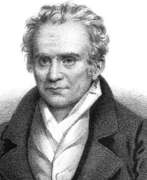

Johann Anton Güldenstädt was a Russian scientist, naturalist and traveler born of Baltic Germans.
Born in Riga, then part of the Russian Empire, Güldenstädt studied pharmacy, botany and natural history in Berlin from 1763. At the age of 22, he earned a doctorate in medicine from the University of Frankfurt. The following year he became a member of an expedition of the Russian Imperial Academy of Sciences sent by Catherine the Great to explore the southern borders of the Russian Empire.
Güldenstädt traveled through Ukraine and the Astrakhan region, as well as the North Caucasus and Georgia. In March 1775 the scientist returned to St. Petersburg. The results of this expedition were published after his premature death from typhoid fever at the age of 36.
This expedition made a great contribution in the fields of biology, geology, geography and especially linguistics. Guldenstedt made detailed notes on the languages of the region. Güldenstädt's materials are still constantly consulted by linguists. Dictionaries of one and a half dozen languages and dialects of the Caucasian peoples compiled by him 250 years ago serve as a valuable basis for research in linguistics and toponymy. He was one of the first European scholars to study the life and culture of the Kumyks, Ingush, Ossetians, Chechens and other North Caucasian peoples.
Güldenstädt was also the first to describe and characterize the soils, vegetation and fauna of the South Russian steppes, and one of the first to explain the origin of black soil.
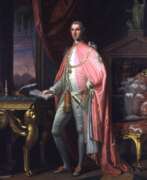

Sir William Douglas Hamilton was a British diplomat, archaeologist and volcanologist, a famous collector, and a Fellow of the Royal Society of London.
He served as British Ambassador to the Kingdom of Naples from 1764 to 1800, but most importantly, he was a passionate researcher of history, art and natural sciences and was a member of the Society of Dilettantes, established for the purpose of studying ancient art.
In Naples, Hamilton amassed a unique collection of antique vases and published an illustrated book about them. In parallel, Sir Hamilton studied the volcanoes Vesuvius and Etna, local volcanic and seismic activity, and the causes of earthquakes in the Neapolitan territory. As a corresponding member of the Royal Society, he sent the results of his research to London. His publications were very valuable for the time.
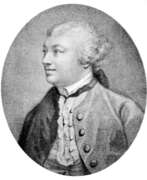

John Hill was a British botanist, pharmacologist and physician, geologist, writer and journalist.
Hill edited the monthly British Magazine for several years, and also wrote a daily society gossip column in The London Advertiser and Literary Gazette. His satirical, often on the edge of propriety articles were often the cause of scandals. Hill also wrote novels, plays, and scientific works on geology, medicine, philosophy, and botany.
In 1759, the first of the 26 volumes of his Plant System was published. This voluminous work contained descriptions of 26,000 different plants and 1,600 illustrations. For this long work, Hill received the Order of Vasa from the Swedish king and began calling himself Sir.
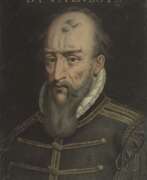

Bernard Palissy was a French natural scientist, painter, ceramicist and sculptor, geologist and writer of the French Renaissance.
Born into a family of artisans, Palissy apprenticed with his father as a glass artist and traveled throughout southwestern France comprehending pottery and studying geology. Today he is best known for his amazing lead-glazed pottery with images of various animals and people. After seeing a white glazed cup, probably of Chinese porcelain, in the 1540s, he set out to learn the secrets of its manufacture. His early research is described in De l'art de la terre. Although Palissy never succeeded in reproducing what he saw, his experiments gave him a thorough knowledge of the chemical compositions of minerals.
From 1575 in Paris, Palissy gave public lectures on natural history, which were published as Discours admirables (1580). In this treatise, Bernard Palissy touches on an incredibly wide range of subjects, from the techniques of ceramics, metallurgy and chemistry to hydrology, geology and fossils. He correctly identified fossils as the remains of ancient life. This work reveals him as a writer and scientist, a creator of modern agronomy and a pioneer of the experimental method, with scientific views generally more advanced than those of his contemporaries.
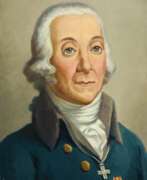

Peter Simon Pállas was a German and Russian scientist-encyclopedist, naturalist and traveler, who gave almost all his life to the service of Russia.
The breadth of his scientific interests made him a true encyclopedist, but he was particularly interested in natural sciences. By the age of 25, Pallas had already acquired European fame as a major scientist-naturalist. At the same time he received an invitation from the St. Petersburg Academy of Sciences, where he was offered a professorship. In 1767, Pallas arrived in St. Petersburg with his wife and soon led several important expeditions to Siberia and southern Russia. In his numerous ethnographic descriptions, the scientist was the first to report in detail on the Kalmyks, Tatars, Mordvins, Chuvashs, Nagaians, Tungus (Evenks), Votyaks (Udmurts), and Cheremis (Mari). In addition, he brought with him large natural-scientific collections. Later he traveled with scientific expeditions to Kamchatka, the Kuril Islands, Crimea and other previously unexplored lands.
In 1785 Catherine II attracted Pallas to the collection and comparative analysis of the languages of the peoples inhabiting America, Asia, Europe and Russia, and he compiled and published a comparative dictionary in two parts (1787-1789), in which more than 200 languages and dialects of the peoples of Asia and Europe were presented. In the last years of his life, among other things, Pallas was engaged in the preparation of a fundamental three-volume work on the fauna of Russia, Zoographia rosso-asiatica ("Russian-Asiatic Zoology"), in which more than 900 species of vertebrates, including 151 species of mammals, of which about 50 new species were introduced. This work was so extensive, and the descriptions of the animals were so thorough and detailed, that until the early 20th century the book remained the main source of knowledge about the fauna of Russia. In 1810. Peter Pallas went to Berlin to prepare illustrations for this work, but a year later the famous scientist died and was buried in Berlin.
A volcano in the Kuril Islands, a reef off New Guinea, and many animals and plants are named after Pallas.
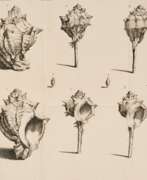

Giovanni Vincenzo Petrini was an Italian priest and theologian, philosopher, mathematician, and expert in mineralogy.
Along with Scipio Breislacus, Petrini was one of the founders of Italian volcanology. He taught philosophy and mathematics, theology, but specialized in mineralogy and created the Mineralogical Cabinet in Nazareth. This museum was famous in Europe and was visited, among others, by Emperor Joseph II, who gave him rare specimens from the lands of the Empire and especially from Hungary.
Giovanni Petrini was the author of the catalog Gabinetto mineralogico del Collegio Nazareno ("The Mineralogical Cabinet of the Nazarene Collegium, described by external features and distributed by component parts" (Rome, 1791-1792). The specimens in it are classified according to a standard structure: salts, earths, bitumens, combustibles, and metals. There is also a section on gemstones.
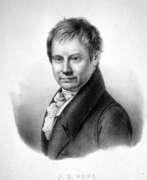

Johann Baptist Emanuel Pohl was an Austrian and Czech scientist, botanist, naturalist, and traveler.
Pohl studied in Prague, earned a doctorate in medicine and practiced science, becoming one of the most prominent botanists in Bohemia. Consequently, he was invited on an expedition to Brazil. Johann Pohl arrived in Brazil in 1817 with the Italian botanist Giuseppe Raddi as part of a large scientific expedition sent by Francis I of Austria, and spent four years traveling through the states of Minas Gerais, Goias, Bahia, and Rio de Janeiro, including some 30 rivers in the country. He collected thousands of plant specimens, as well as studying minerals and zoology, exploring gold and diamond mines, caves, and villages of local people.
After his return to Europe, Pohl served as curator of the Vienna Museum of Natural History and the Museum of Brazil in Vienna until his death. His extensive collections, including some 4,000 plant specimens, were housed here along with the expedition's other scientific collections.
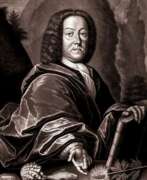

Johann Jakob Scheuchzer was a Swiss naturalist and geologist, paleontologist and fossil collector.
Scheuchzer studied at the University of Altdorf near Nuremberg, earned a doctorate in medicine at Utrecht University, and studied astronomy. He worked as a teacher, physician, and corresponded extensively with many scientists, writing several papers, including those on Swiss research, weather, geology, and fossils. Scheuchzer collected fossils during his extensive travels. And, as a proponent of diluvialism, he believed that all fossils and layers of the earth were formed by the Flood.
Between 1731 and 1735, Scheuchzer published a massive four-volume work called Physica Sacra, which is essentially a commentary on the Bible. It presented the facts of natural history along with passages of scripture. Thus Physcia Sacra attempted to reconcile the Bible with science.
This book is also called the "Copper Bible" because it contains over 750 magnificent color engravings on copper plates. These engravings are in themselves the pinnacle of engraving from the Baroque period. The illustrations depict scenes with biblical and scientific motifs. They were based on his own cabinet of natural history and other famous European cabinets of rare specimens. The engravings were produced by highly skilled engravers, including Georg Daniel Heumann and Johann August Corwin.
During his lifetime, Johann Jakob Scheuchzer wrote 34 scientific papers and many articles, and he was a member of the Royal Society.
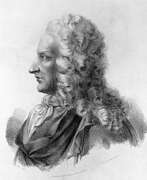

Antonio Vallisneri the Elder was an Italian naturalist, physician and geologist, collector, and member of the Royal Society of London.
He studied in Bologna, Venice, Padua and Parma and headed the chair first of practical medicine and then of theoretical medicine at the University of Padua. In addition to medicine, Vallisneri conducted important research in the natural sciences. In particular, in the field of geology, he is credited with recognizing the organic nature of fossils unrelated to the Great Flood, which contributed to the end of centuries-old disputes. His observations on the water cycle, thermal waters and some mines in the Apennines were also important.
Vallisneri was interested in all branches of the natural sciences, collecting numerous collections of animals, minerals, and other natural objects during his lifetime. The scientist compiled a brief catalog of his collection, which was published in 1733 by his son, Antonio Vallisneri, Jr. The Vallisneri Museum included naturalistic finds, anatomical preparations, medical and scientific instruments, antiques, and exotics from various cultures and eras as well as geographical origins. In 1734, his son donated this museum to the University of Padua, initiating the creation of a general museum for the university.
Antonio Vallisneri Jr. followed in his father's footsteps and for many years held the position of professor of natural history at the University of Padua. He devoted his life to collecting and processing his father's writings and tidying up his library, which contained about a thousand volumes. These were donated to the University Library in Padua.
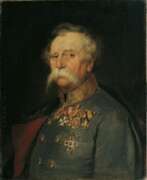

Franz Edler von Hauslab or Franz Ritter von Hauslab was an Austrian military commander, military educator, cartographer, geologist and artist.
He graduated from the engineering academy and then taught at it, achieving great success in topography and cartography. During the Austro-Italian-French War in 1859 he commanded artillery.
Von Hauslab was engaged in geological research and published several scientific works. He introduced a number of innovations in Austrian cartography, such as creating a color scale for contour lines on maps and introducing color lithography to cartography. Von Hauslab was a member of many learned societies.
